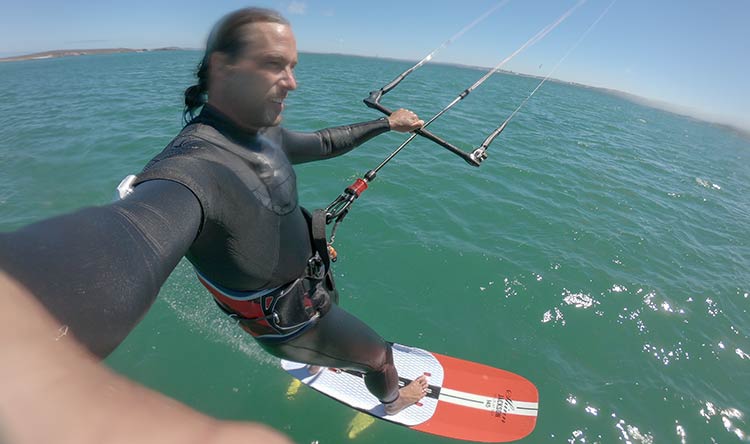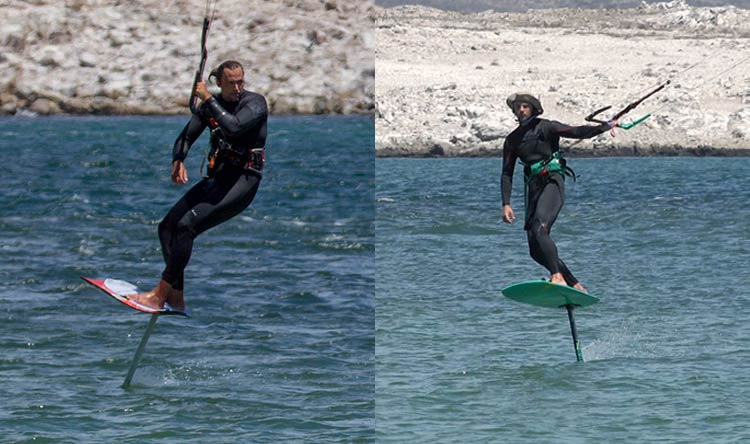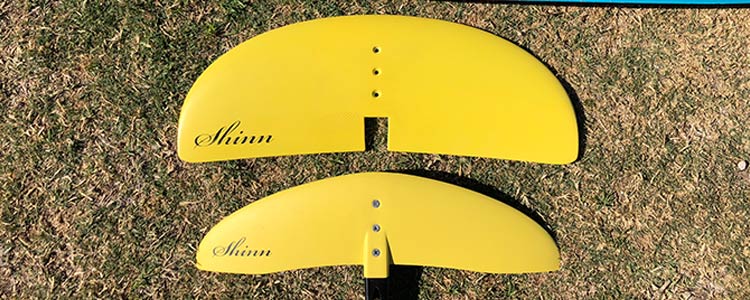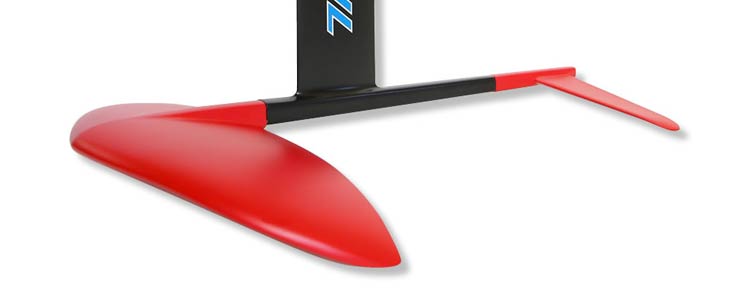This is the second instalment of my Road to Release post leading up to the release of the new Progression Kitefoiling videos. If you haven’t read last weeks intro post then check that out or dive into days look at equipment. Foils and boards have changed massively in the last few years with manufactures finally starting to think how to make learning to foil and improve, far easier for the average kiteboard. Having had the opportunity to try several foils this winter, it surfaced a couple of realisations about equipment and how we set it up.
1. Body Weight & Height

First, something that is worth understanding – body weight & your height plays a big role in foiling setup. Control of a foil is dependant on very small changes in weight distributions. So for lighter weight riders, this can mean bigger movements and for the heavier boned, small tweaks. Height also needs to be factored in – a foil will be most stable when your centre of mass is as low as possible and close to the actual wings. So the taller you are more chance you have to get your weight out of place.
So unintentional changes can have a bigger impact for those with a bit more meat on their bones or head in the clouds!
What does this mean? Finding the right foil for you is a personal thing and may well be different from your mate, who swears their foil is the best things ever! Having said that it might also just mean that you need to change the setup of the foil to make it work for you, compared to your friend.

Myself and Danny, different sizes, different setups
A good example. I’m 6’6” and 105kg, whereas my mate is 5’9” and 75kg. He loves his Levitaz Exo with Cruser wing. I tried it and it was a tough beast to tame. But all it needed was to move the mount forward 3cm, ditch the straps so I could place my feet exactly where I wanted and bam it was feeling peachy. So be prepared to experiment with the mast mount position, the placement of your footstraps and feet positions (some foils like a wide stance, other more narrow) and tweak the rear wing stabilizer, if it has the option too. If you’re less experience get a friend with more hours on a foil to help you get it adjusted correctly.
2. The Front Wing

You can learn on either of these front wings but the top one will make your first few sessions so much easier
Not all front wings are made equal. Having tried quite a few, it’s my opinion that for your first few session you will learn significantly faster if you use a front wing which generates lift at lower speeds AND the lift comes on slowly and drops off slowly. Basically, you want something slow! This greatly reduces the nasty surprises that many of us experienced when learning to foil previously, on intermediate and advanced wings (all that were available at the time).
I touched on this in my last post but for the friend I taught recently – it was amazing to see the difference this gentle style of foil makes when learning:
- A kiter can ride with less power, giving them time to focus on the new stance and weight distribution compared to twintip or surfboard riding
- If you accidentally pop up on the foil, it happens slowly and gives time for them (or me whispering in their ear, thanks to BBTalkin) to learn the techniques to take back control and slowly bring the foil back down and the board back on the water.
- The number of violent crashes is reduced and in this case, he avoided any heavy landings
- In two hours he was able to learn riding off the foil, practice coming up and down and eventually ride for short distances constantly on the foil.
So if you really want to learn to foil as quickly as possible, start slow with the right foil, set up correctly for you and you’ll cut out a whole load of crashes!
Can I use a Surf/SUP wing?

The Go Foil surf wing is an amazing bit of kit but not for learning to kite hydrofoil
Also be slightly wary of learning using one of the newer dedicated surf/sup foil. They are amazing foils but not for beginner kite foilers. These front wings do offer some of what you want – lift at slow speeds but it can be too much lift, too quickly. They also can offer lots of directional stability, necessary when trying to pop up on a surfboard but the extra sideways pull of our kite can make it hard for the novice kite foiler to easily direct the board on their first runs, so you find you get repeatedly pinged off sideways.
Feel free to ask any specific comments below if you’d like advice on specific foils you are considering buying or troubles you are having getting the basics learnt.
 In the new Kitefoiling videos we’ll cover how to structure this first session to learn all the correct techniques as quickly as possible. For those wanting to make it even easier grab a coaching session with us (or one of the growing number of foiling coaches around the world), get the perfect equipment for that first session before you start out on your own kit.
In the new Kitefoiling videos we’ll cover how to structure this first session to learn all the correct techniques as quickly as possible. For those wanting to make it even easier grab a coaching session with us (or one of the growing number of foiling coaches around the world), get the perfect equipment for that first session before you start out on your own kit.